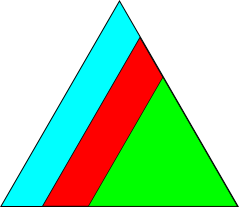Applications#
If analysis using orix forms a part of published work please cite the paper (journal, arXiv) and the package itself via the Zenodo DOI: https://doi.org/10.5281/zenodo.3459662.
Below is a tentative list of works using orix. If you think your work should be listed here, please raise an issue on GitHub or contact the developers.
2024#
I. MacLaren, E. Frutos-Myro, S. Zeltmann, C. Ophus, “A method for crystallographic mapping of an alpha-beta titanium alloy with nanometre resolution using scanning precession electron diffraction and open-source software libraries,” Journal of Microscopy, 1-9 (2024). https://doi/10.1111/jmi.13275.
2022#
P. Harrison, X. Zhou, S. M. Das, P. Lhuissier, C. H. Liebscher, M. Herbig, W. Ludwig, E. F. Rauch, “Reconstructing Dual-Phase Nanometer Scale Grains within a Pearlitic Steel Tip in 3D through 4D-Scanning Precession Electron Diffraction Tomography and Automated Crystal Orientation Mapping,” Ultramicroscopy 113536 (2022). https://doi.org/10.1016/j.ultramic.2022.113536.
N. Cautaerts, P. Crout, H. W. Ånes, E. Prestat, J. Jeong, G. Dehm, C. H. Liebscher, “Free, flexible and fast: Orientation mapping using the multi-core and GPU-accelerated template matching capabilities in the python-based open source 4D-STEM analysis toolbox Pyxem,” Ultramicroscopy 113517 (2022). https://doi.org/10.1016/j.ultramic.2022.113517. (arXiv: https://arxiv.org/abs/2111.07347.)
2020#
D. N. Johnstone, B. H. Martineau, P. Crout, P. A. Midgley, A. S. Eggeman, “Density-based clustering of crystal (mis)orientations and the orix Python library,” Journal of Applied Crystallography 53(5) (2020). https://doi.org/10.1107/S1600576720011103. (arXiv: https://arxiv.org/abs/2001.02716).
